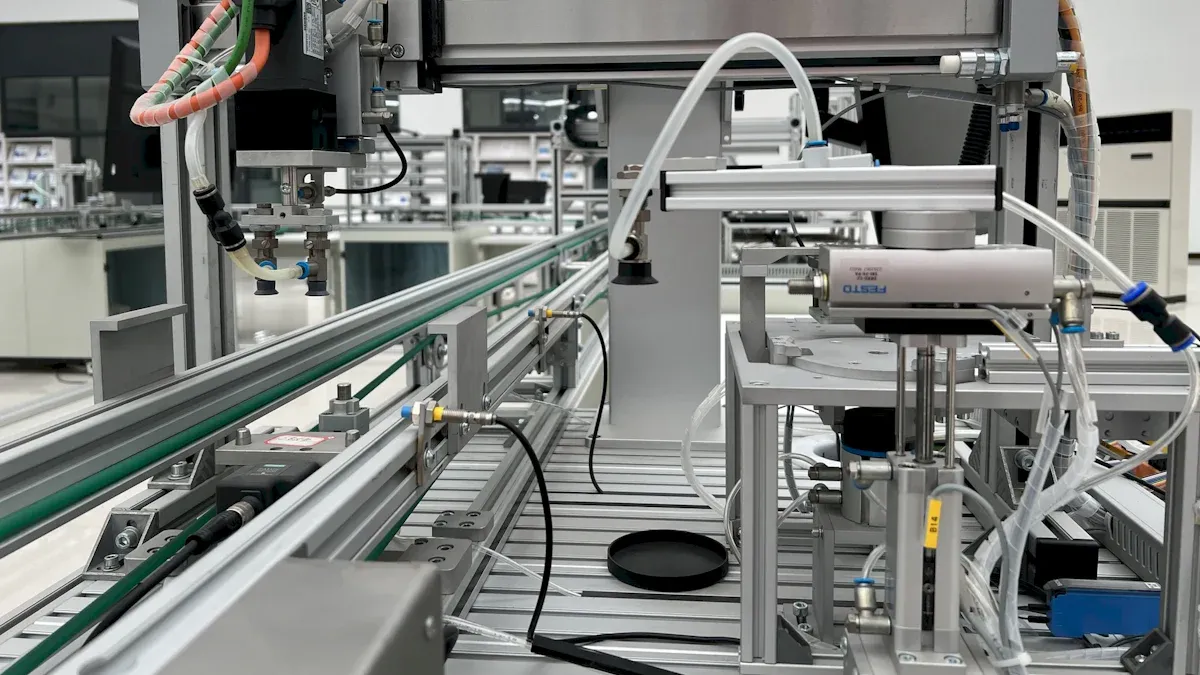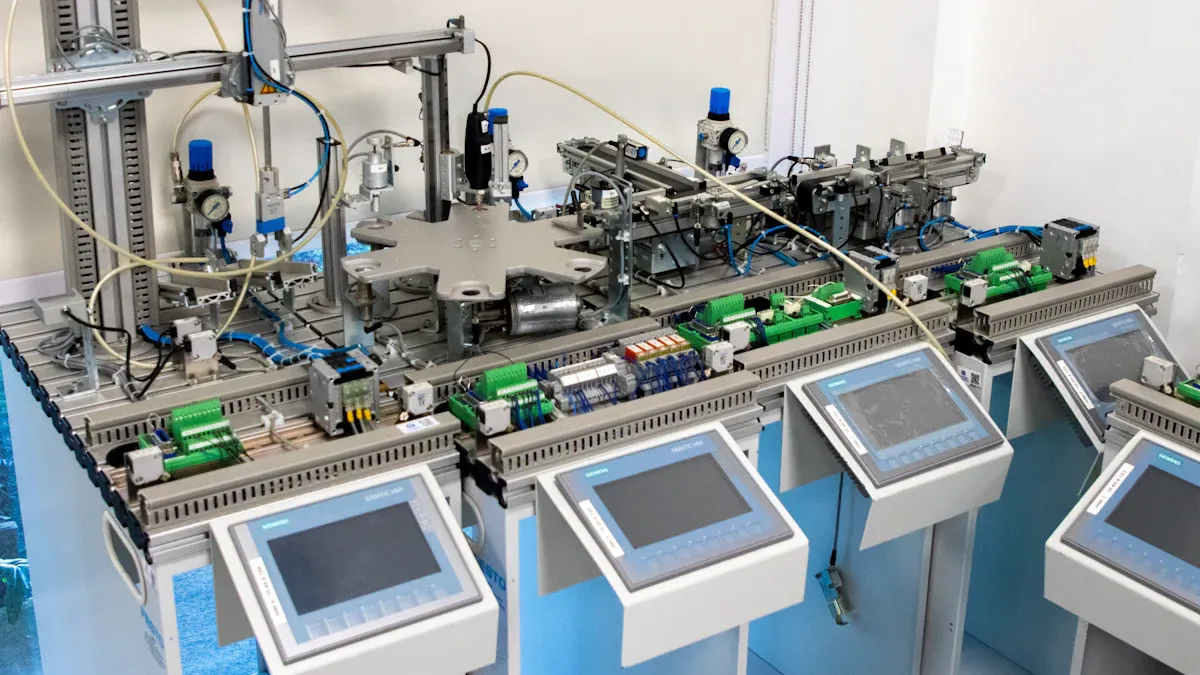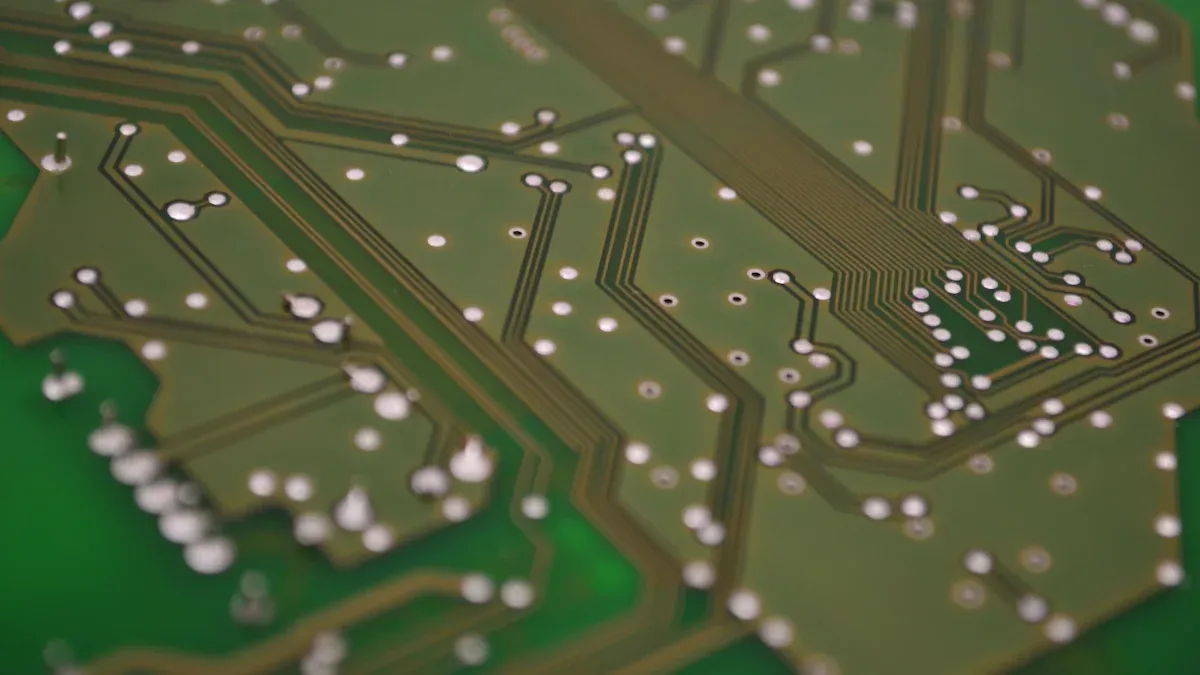What Is Automated Through Hole Assembly and How Does It Work

Automated through hole assembly uses advanced machines to place and solder electronic components onto printed circuit boards, ensuring faster production and consistent high quality for every board. Automated through hole assembly is especially valuable for components that require strong, reliable connections, making it essential in the manufacturing of various electronics. Industries such as automotive, aerospace, and industrial equipment rely on automated through hole assembly to produce durable electronic products. This assembly process allows for precise placement and secure soldering of parts on PCBs. Designers often choose automated through hole assembly when creating printed circuit boards that must withstand high power or harsh environments. Automated through hole assembly remains a crucial technology in electronics manufacturing, particularly when robust connections are necessary. Many devices, including medical instruments and consumer electronics, utilize automated through hole assembly to ensure long-lasting performance.
Key Takeaways
Automated through hole assembly uses machines to put parts on circuit boards fast and with care. The machines also solder the parts. This makes the connections strong and dependable.
The process has quick part insertion. It uses wave or selective soldering. It also uses careful inspection like AOI and X-ray. These steps help make sure the boards are high quality and last a long time.
LTPCBA gives advanced through hole assembly. They use strict quality checks and have certifications. They help industries like aerospace, medical, and automotive. These industries need electronics that are tough and last long.
Automated Through Hole Assembly Process

Component Insertion
Automated through hole assembly starts by getting the board ready. Machines place electronic parts with leads into holes on the board. These machines, like radial and axial insertion systems, can handle many types of parts. They work with DIP packages and odd-form parts too. The machines move fast and put each part in the right spot. This helps make the process quicker and cuts down on mistakes. It is very important for making lots of electronics.
Machines like the AI-606 and ICT-Z3020 can insert thousands of parts every hour. They trim the leads, check the direction of each part, and bend the leads to hold the parts in place before soldering. If a part is big or shaped oddly, a skilled worker might put it in by hand to keep the quality high.
Using automated through hole assembly makes the process faster and more steady. It also helps lower the time needed to finish making the boards. This is important for making good PCBs in electronics factories.
Soldering Methods
After putting in the parts, the next step is soldering. The most common way is wave soldering. In this step, the board goes over a wave of hot, melted solder. The solder fills the holes and covers the leads. This makes strong connections for both holding and electricity. Wave soldering is good for through hole assembly because it can solder many spots at once. This saves time and makes the work more reliable.
Some boards use selective soldering, which only solders certain areas. This is helpful for boards that use both through hole and surface mount parts. Selective soldering puts less heat on the board and makes better solder joints, especially for tricky boards.
Factories follow strict rules during soldering. Rules like IPC-A-610 and J-STD-001 say how solder joints should look and work. LTPCBA uses special heat settings and nitrogen to stop problems. Skilled workers and smart machines make sure every solder joint is done right for electronics.
Inspection and Testing
Checking and testing are very important steps in through hole assembly. Automated Optical Inspection (AOI) uses cameras to look for problems like missing parts, solder bridges, or parts in the wrong place. AOI compares pictures of the board to a good example and finds problems fast.
For harder boards, X-ray inspection can find hidden solder problems and parts that are not lined up. In-circuit testing (ICT) checks if each part works and is connected right. Functional testing makes sure the board works as it should. Burn-in testing heats the board and uses high voltage to find hidden problems. This helps make sure the board will last a long time.
Inspection Technique | Purpose and Advantages | Limitations |
|---|---|---|
Automated Optical Inspection (AOI) | Finds surface problems, makes quality better, and spots issues fast. | Only finds problems on the surface. |
X-ray Inspection | Finds hidden solder problems, good for hard or thick boards. | Costs more and needs skilled workers. |
In-Circuit Testing (ICT) | Checks if parts are connected and working, fast for big jobs. | Might not find all physical problems. |
Functional Testing | Makes sure the board works the way it should. | Might miss hidden problems. |
Burn-In Testing | Checks if the board will last by stressing it. | Takes a long time and needs special tools. |
LTPCBA uses seven steps to check quality, like AOI, X-ray, and heating and cooling tests. These steps make sure every board is made well and will last. Charts watch for changes in the process to keep things steady. Every board can be tracked and meets world rules like ISO and IPC-A-610. This means each through-hole assembly works well and lasts in electronic products.
Through Hole Technology with LTPCBA

Equipment and Capabilities
LTPCBA uses special machines for through hole assembly. These machines have servo motors and smart controls. They put electronic parts on boards fast and in the right place. The DIP line can handle many kinds of parts. Auto-insertion machines can add up to 4,000 parts each hour. Wave soldering makes strong joints. This is needed for boards with high power or voltage. LTPCBA checks every board at each step. They use automated optical inspection and functional testing to keep quality high.
LTPCBA has ISO, UL, and IPC-A-610 certifications. These show they follow strict safety and quality rules.
Certification Type | Status for LTPCBA |
|---|---|
ISO | Held |
UL | Held |
IPC-A-610 | Held |
Benefits and Applications
Through hole assembly makes strong bonds. It is best for boards that face shock, vibration, or heat. Parts go through the board and stay in place. This helps in tough conditions. Many industries use through hole technology. Aerospace, military, and medical fields need reliable electronics. Power electronics, RF boards, and big machines use it for large parts and high current. LTPCBA’s process makes repair and replacement easy. This helps with prototypes and products that need fixing.
Industry/Application Sector | Typical Applications and Reasons |
|---|---|
Aerospace and Military | Boards need to be strong and reliable. |
Industrial Electronics | Boards face heat, shocks, and vibration. |
Medical | Electronics must be safe and have strong bonds. |
Prototyping and Low Volume Runs | Easy to change parts and test new ideas. |
High Frequency Circuits (RF) | Boards need good signals and low noise. |
Comparison with Surface Mount Technology
Through hole and surface mount technology both have good points. Through hole assembly gives more strength. It holds parts through the board. This is best for heavy or high-power parts. Surface mount technology puts parts on top of the board. It works well for small, light parts. SMT lets you fit more parts on a board. SMT is faster and costs less for big jobs. Through hole is better for boards that need to handle stress or be fixed easily. LTPCBA uses both methods for mixed assemblies. This helps them make complex pcbs for many uses and keep high quality.
Through hole assembly makes strong and steady connections for important electronics. Many companies use through hole technology because it is safe and lasts a long time. LTPCBA uses advanced through hole assembly to follow strict rules.
Through hole assembly works well with big parts and lots of power.
Through hole technology checks quality by testing carefully.
Through hole assembly is used in aerospace, medical, and car industries.
Through hole technology follows ISO and IPC rules.
Through hole assembly uses AOI and X-ray to check for problems.
Through hole technology makes fixing and upgrading easy.
Through hole assembly lets factories make boards quickly and the same way every time.
LTPCBA is known for being very good at through hole assembly and through hole technology, so many people pick them for reliable PCB assembly.
FAQ
What is the main advantage of automated through hole assembly?
Automated through hole assembly makes strong and steady connections. It is best for parts that face heat, stress, or lots of power.
Tip: Automated machines help make fewer mistakes and work faster.
Can LTPCBA handle both through hole and surface mount assemblies?
Yes, LTPCBA has special machines for both types of assembly. They can also build mixed assemblies for hard electronic products.
How does LTPCBA ensure quality in through hole assembly?
LTPCBA checks quality at every step of the process. They use AOI, X-ray, and tests to see if boards work. Their work follows ISO, UL, and IPC-A-610 rules.
Quality Check | Purpose |
|---|---|
AOI | Finds problems on top |
X-ray | Looks at hidden joints |
Functional | Checks if board works |
See Also
Choosing Between SMT And Through-Hole PCB Assembly Methods
Complete Overview Of Through-Hole PCB Assembly Techniques
Common SMT Assembly Processes And Their Workflow Explained
Selecting The Best Through-Hole PCB Service For Industrial Use
Understanding How SMT Assembly Enables Double-Sided Component Mounting
